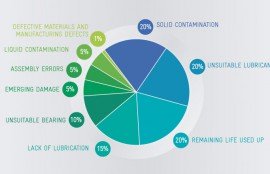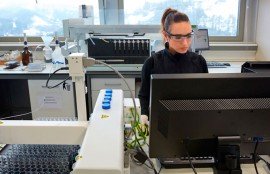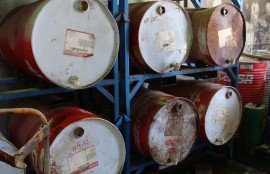
With time, the high temperatures heat transfer fluids (HTF) gradually lose their initial characteristics due to various degradation processes. The most common are rusting, oxidation and thermal decomposition.
Temperature is one of the most critical parameters in the stability of these fluids, so greater attention must be paid to the thermal decomposition of the fluid.
| Base compound | Biphenyl | Diphenyl ether |
|---|---|---|
| Boiling point (ºC) | 255 | 259 |
| Fire point (ºC) | 110 | 115 |
Table 1. Chemical properties of biphenyl and diphenyl ether
When the temperature reaches high enough values, the fluid starts to decompose into two main types of degradation compounds:
Products with a low boiling point (low boilers), generated through the thermal cracking of the fluid. If the content of these compounds reaches a high enough level in the fluid, it causes problems such as cavitation of the pumps, an increase in system pressure and a reduction in the fire point.
As a temporary measure, the system is vented to remove these compounds and the potential damage that they can cause to the system. High amounts of these compounds (>1%) can cause significant expense with the replacement of fluid due to venting.
| Low boiler compounds | Hydrogen | Methane | Phenol | Benzene |
|---|---|---|---|---|
| Boiling point (ºC) | -253 | -162 | 182 | 80 |
| Fire point (ºC) | # | -188 | 79 | -11 |
Table 2. Chemical properties of the compounds with a low boiling point (low boilers)
Products with a high boiling point (high boilers), generated by the thermal decomposition of the fluid. Some of the compounds with a low boiling point can polymerise and recombine to form products with a higher molecular weight. As these compounds will have a higher boiling point than the fluid, they cannot be vented from the system. When their content is above 10%, the viscosity of the system increases so much that it affects its ability to be pumped and the heat transfer. A high quantity of high boilers (>10%) can cause the formation of sludge, which makes it necessary to replace the fluid.
The fraction of high boilers consists of products with two, three and four aromatic rings: dibenzofurans, terphenyl isomers, phenyl-ether biphenyl isomers (BIPPE), tetraphenyl isomers, phenyloxyterphenyls and other similar compounds with four aromatic rings.
The speed at which the high and low boilers are formed depends primarily on the temperature, but the type and proportion of compounds formed remain practically the same. This occurs provided fluid degradation temperature is not particularly high (>>425ºC) or the exposure time at these conditions is not very long.
Degradation products are generally soluble in the fluid, unless the fluid has degraded so much (temperature, oxygen, time) that solid carbon particles have formed.
In normal working conditions, low-molecular-weight contaminants (low boiling), water, air and degradation products accumulate in the steam stage. These compounds must be remove regularly with the venting valve.
The greatest limitation factor of the fluid is its stability at the working temperature. When the fluid exceeds this temperature, it breaks down and quickly degrades.








